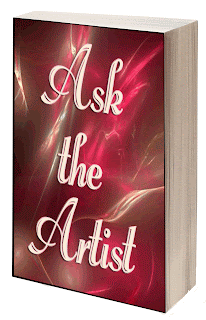
Dear Artist
Do you have a favourite style? I know you produce wonderful covers for BWL and I am sure that they are always the absolute best you can do based on the writer's requirements, but you must have favourites. What do you consider to be a five star design for a cover with regards to layout, colour, content, background etc?
UK Lady
* * *
Dear UK Lady,
Thank you for taking the time to ask such a fun question. Really, it all depends on the genre of the book.
When it comes to anything from sweets to erotic romances, I like covers that actually clue in to heat level. I don't like to see, or create, a cover that is sweet at best for a smoking hot story. Flipside, when a cover is hot enough to melt my monitor, but the story is lukewarm at best.
For softer historicals, I am a fan of the older Julie Garwood time period style covers - with a castle, a flower, etc. I LIKE those covers for soft historical romances. That said, for the hotter works, I HATE that style of cover. For hotter historicals, I like the ones with a couple on them.
Paranormal and Suspense romances should most definitely be evocative of the genre. If there is a wolf shifter who is the main love interest, then either the title or the cover should express that in some way. Same for if the book is set in the year 3125 on a far-away planet.
I am not much into straight horror and suspense and all, because I never feel like I am pulling it off well. I am a 'fluffy bunny' cover artist - I like creating light, fun, sexy, covers. So I don't have much insight to offer there.
Young Adult should be FUN and to some degree flirty, even if there isn't a strong romance. The cover should flirt with the reader ... so a person, or an object, is fine either way on those.
Fiction, just general fiction - either historical or modern chick lit, etc should also be fun or somber, sexy or spooky depending upon the sub-genre. Again, either people or objects look good to me.
Non-fiction can also go either way.
As for what makes a 5-star cover (to me), well ...
* The font has to match the images, and the images needs to convey/fit the genre
* The images need to actually look good together! I can't express that enough. Poor quality photo morphs where images of different characters are just slapped together without blending them into each other in a cohesive fashion just don't work for me. And let's be real, there are a ton of them out there like that.
* The cover should absolutly, without a doubt, clue the reader in to the truth of the story. There should be nothing misleading about it (unless the point is misdirection).
* The color choice needs to fit - in all details.
Like always, this post is just my opinion, so mileage can and will vary from artist to artist (and reader to reader).
* * * ~ * * *
If you have a question that you would like Dear Artist to answer, you can leave it in the comment section and it will be addressed (reasonably) soon.













